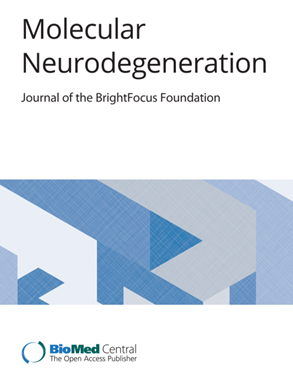The interplay of inflammation and remyelination: rethinking MS treatment with a focus on oligodendrocyte progenitor cells
IF 14.9
1区 医学
Q1 NEUROSCIENCES
引用次数: 0
Abstract
Multiple sclerosis (MS) therapeutic goals have traditionally been dichotomized into two distinct avenues: immune-modulatory-centric interventions and pro-regenerative strategies. Oligodendrocyte progenitor cells (OPCs) were regarded for many years solely in concern to their potential to generate oligodendrocytes and myelin in the central nervous system (CNS). However, accumulating data elucidate the multifaceted roles of OPCs, including their immunomodulatory functions, positioning them as cardinal constituents of the CNS’s immune landscape. In this review, we will discuss how the two therapeutic approaches converge. We present a model by which (1) an inflammation is required for the appropriate pro-myelinating immune function of OPCs in the chronically inflamed CNS, and (2) the immune function of OPCs is crucial for their ability to differentiate and promote remyelination. This model highlights the reciprocal interactions between OPCs’ pro-myelinating and immune-modulating functions. Additionally, we review the specific effects of anti- and pro-inflammatory interventions on OPCs, suggesting that immunosuppression adversely affects OPCs’ differentiation and immune functions. We suggest a multi-systemic therapeutic approach, which necessitates not a unidimensional focus but a harmonious balance between OPCs’ pro-myelinating and immune-modulatory functions.炎症与再髓鞘化的相互作用:以少突胶质祖细胞为重点重新思考多发性硬化症的治疗方法
多发性硬化症(MS)的治疗目标历来被分为两种不同的途径:以免疫调节为中心的干预措施和促进再生的策略。少突胶质祖细胞(OPCs)多年来一直被认为只具有在中枢神经系统(CNS)中生成少突胶质细胞和髓鞘的潜力。然而,不断积累的数据阐明了 OPC 的多方面作用,包括其免疫调节功能,并将其定位为中枢神经系统免疫系统的主要组成部分。在本综述中,我们将讨论这两种治疗方法如何相互融合。我们提出了一个模型:(1) 在慢性炎症的中枢神经系统中,炎症是OPCs发挥适当的促进髓鞘化免疫功能的必要条件;(2) OPCs的免疫功能对其分化和促进髓鞘再形成的能力至关重要。这一模型强调了OPC促进髓鞘形成和免疫调节功能之间的相互影响。此外,我们还回顾了抗炎和促炎干预措施对 OPCs 的具体影响,指出免疫抑制会对 OPCs 的分化和免疫功能产生不利影响。我们提出了一种多系统治疗方法,这种方法需要在 OPCs 的促进髓鞘形成功能和免疫调节功能之间取得和谐的平衡,而不是单一的关注。
本文章由计算机程序翻译,如有差异,请以英文原文为准。
求助全文
约1分钟内获得全文
求助全文
来源期刊

Molecular Neurodegeneration
医学-神经科学
CiteScore
23.00
自引率
4.60%
发文量
78
审稿时长
6-12 weeks
期刊介绍:
Molecular Neurodegeneration, an open-access, peer-reviewed journal, comprehensively covers neurodegeneration research at the molecular and cellular levels.
Neurodegenerative diseases, such as Alzheimer's, Parkinson's, Huntington's, and prion diseases, fall under its purview. These disorders, often linked to advanced aging and characterized by varying degrees of dementia, pose a significant public health concern with the growing aging population. Recent strides in understanding the molecular and cellular mechanisms of these neurodegenerative disorders offer valuable insights into their pathogenesis.
 求助内容:
求助内容: 应助结果提醒方式:
应助结果提醒方式:


